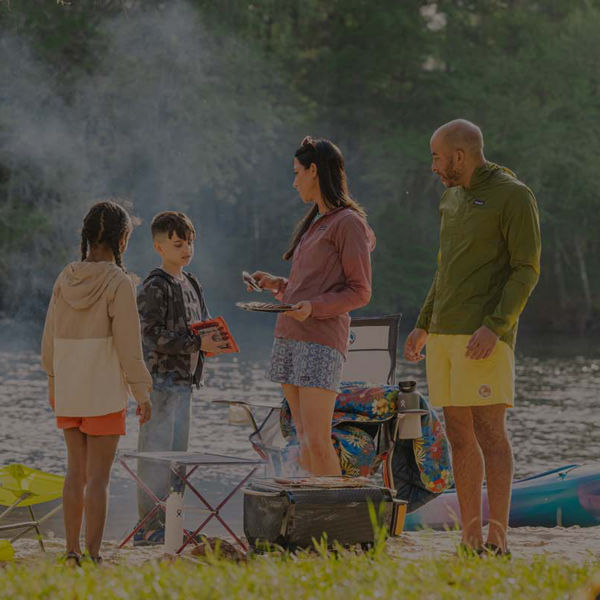
Sitting around a fire outdoors is a primal experience. It deepens conversations and laughter, warms cold nights, and casts a beautiful glow—it makes the wilderness feel a little more like home. But with this primal pleasure comes great responsibility. You need to know how to start and maintain a fire properly, minimize impact, and whether or not you should have one at all. Use this guide to become a campfire master.
In this article, you’ll learn how to:
- Decide if a campfire is safe, legal, and ethical.
- Prepare a campfire site.
- Find the best tinder, kindling, and fuel.
- Build and start a campfire.
- Deal with common fire challenges.
- Safely extinguish a fire.
Can You Start A Fire? Should You?
Before you hit the trail, check fire regulations with the relevant land management agency (such as a national park or national forest). Some places always prohibit campfires in certain sensitive areas or above certain elevations. There might also be temporary restrictions in place based on wildfire danger.
But even if you get the official green light for a fire, ask yourself: Should I? Campfires can have an impact on fragile environments such as high-alpine zones, deserts, or heavily used areas, so they aren’t advised. If there’s little dead and down wood around your campsite, don’t strip every last stick out of the area just for your fire. And if it’s windy, be very cautious: Wind can carry burning embers a considerable distance and possibly start a wildfire. There’s no hard rule for making this decision; assess the conditions and err on the side of caution.
Preparing a Campfire Site
Everything looks OK for a safe and ethical campfire? Next step: Find your site. By far the best place is an established fire ring (you don’t want to make yet another impacted spot). If there isn’t one at your campsite, follow Leave No Trace guidelines and make a “mound” fire, which helps minimize impact and protects organic soil from the heat. First, find a spot well clear of your tent and any overhanging branches. Clear the ground of anything flammable, then build a platform for the fire out of at least three inches of sand or gravel (preferably from a disturbed area). Gather rocks and make a rock ring around the mound. Tip: Placing a folded tarp under the mound makes cleanup easier. (See below for how to disassemble everything when you’re done.)
Another option: Pack in a fire pan (a metal disc made to hold a small campfire). Place it on top of a small circle of stones and build your fire inside it.




















